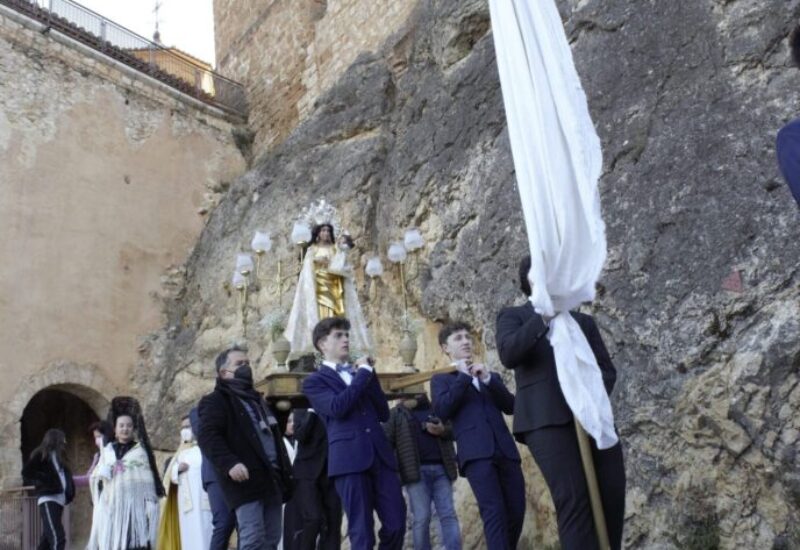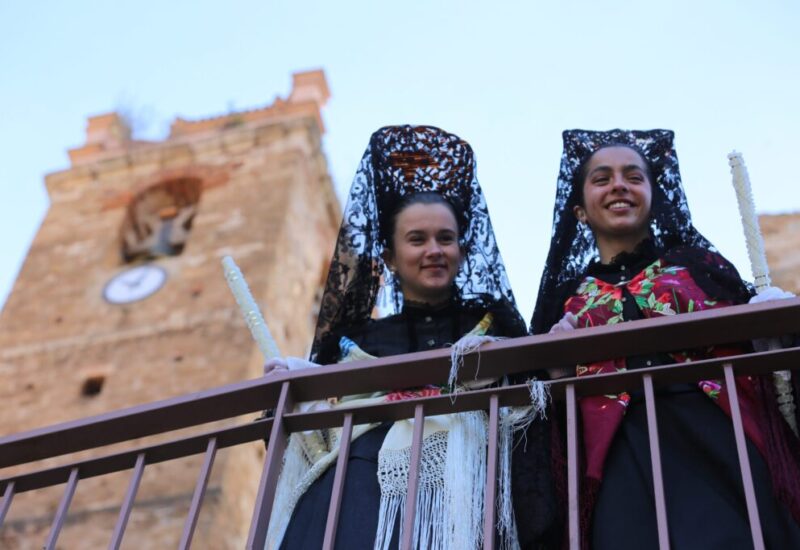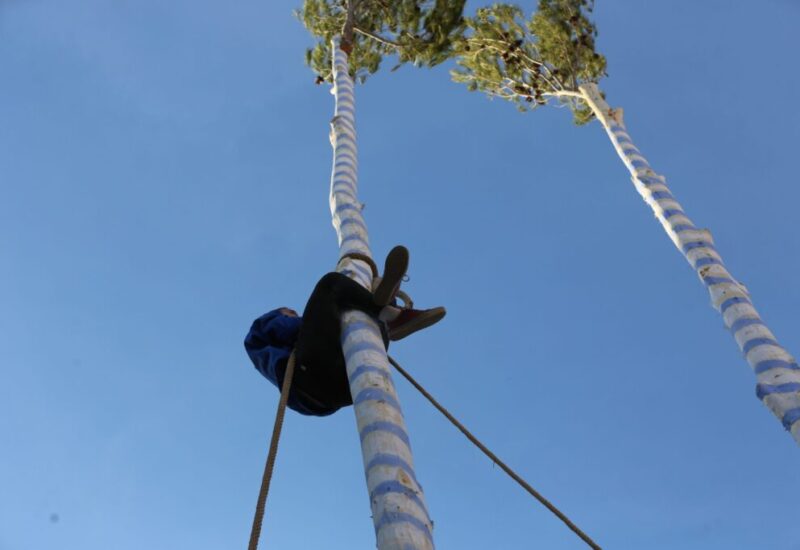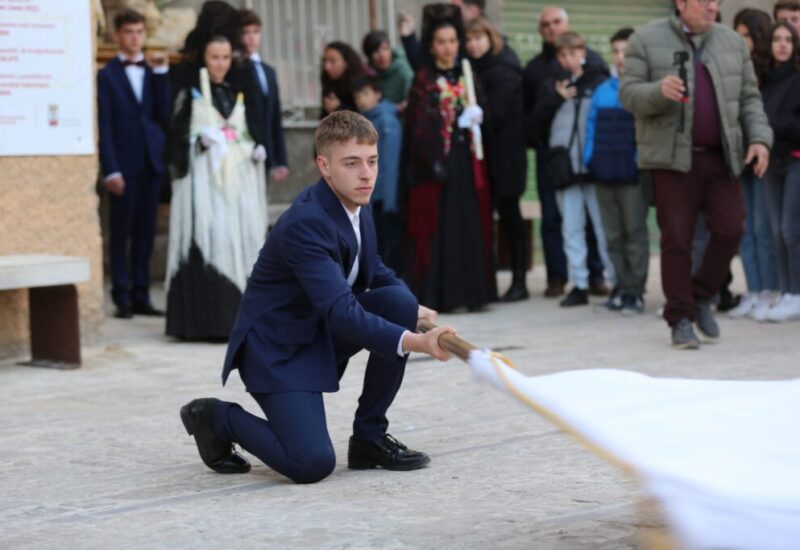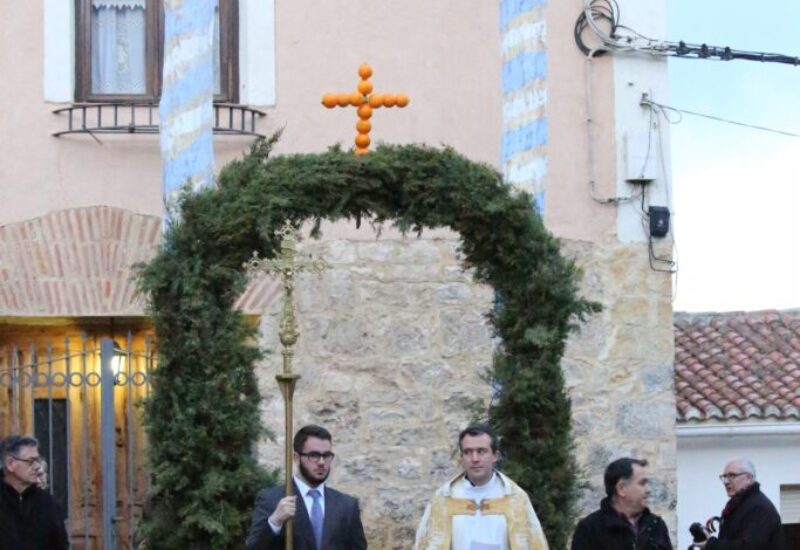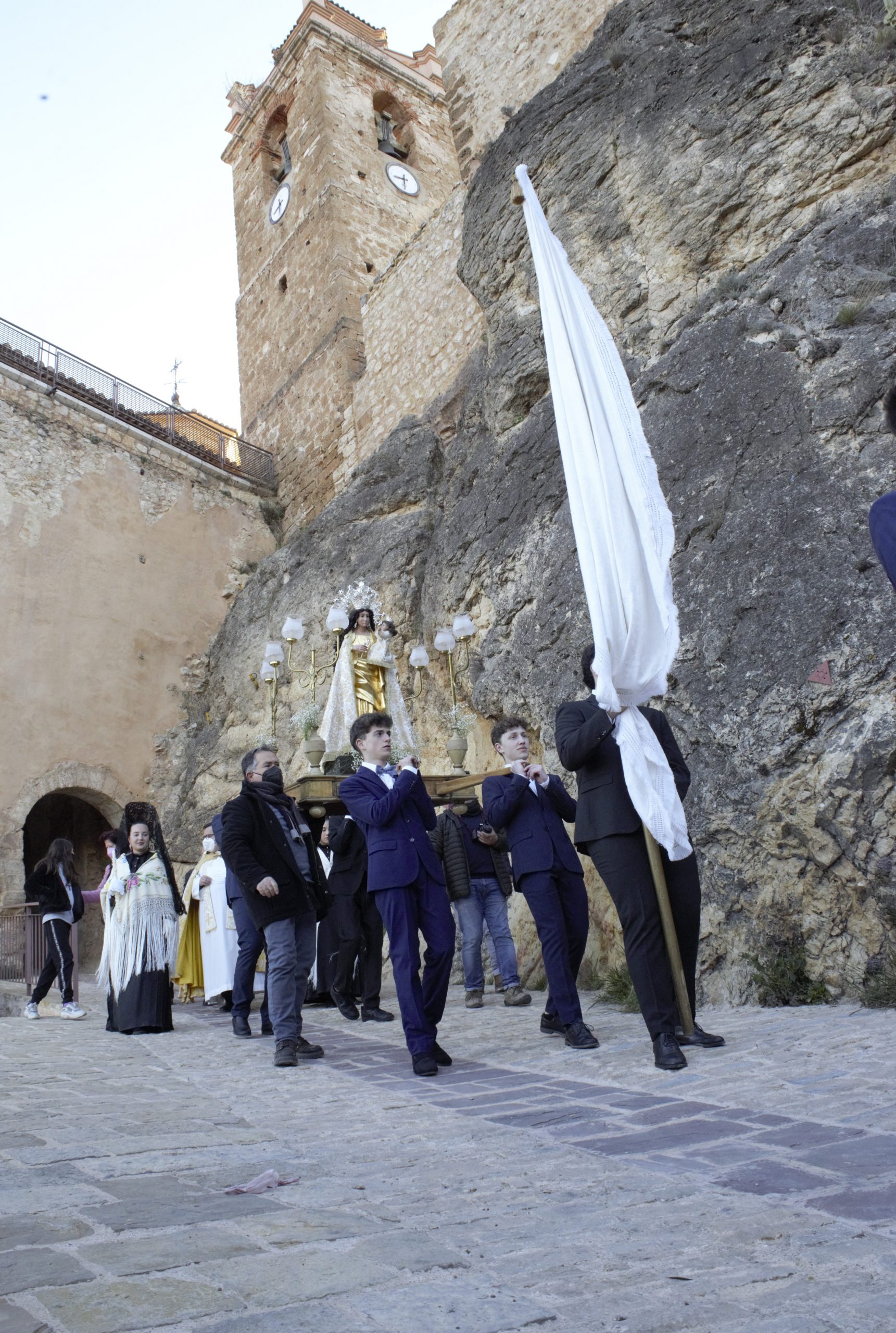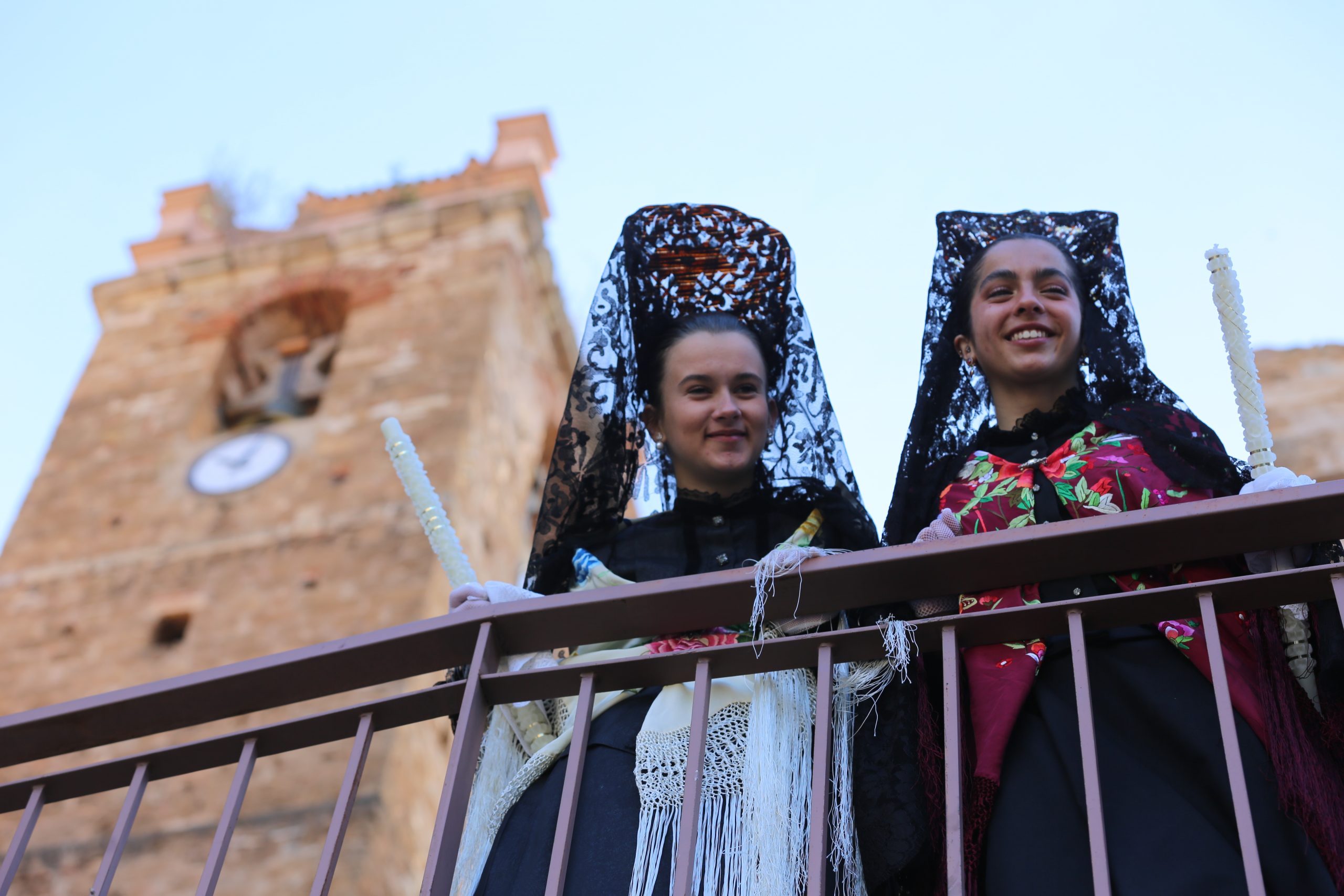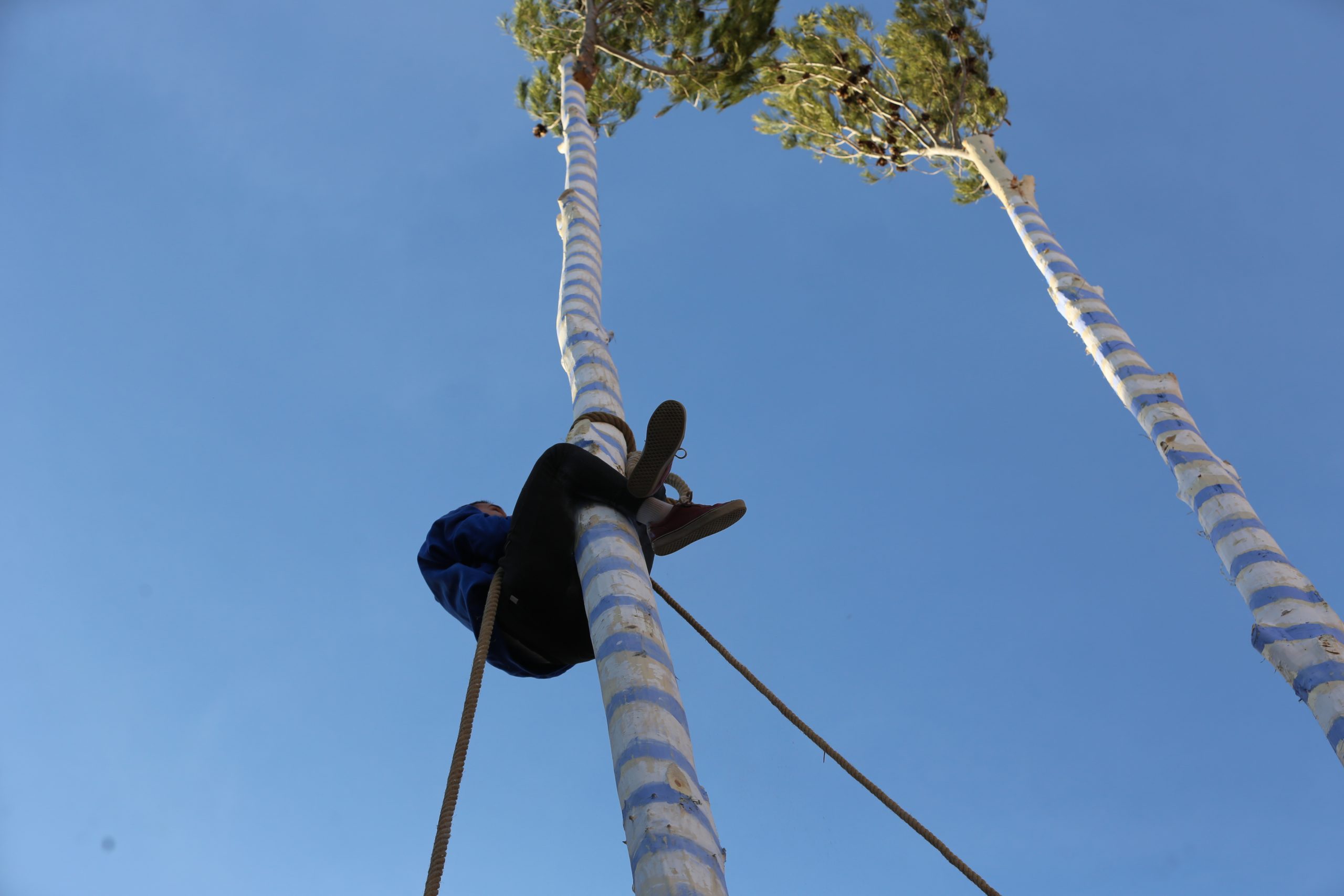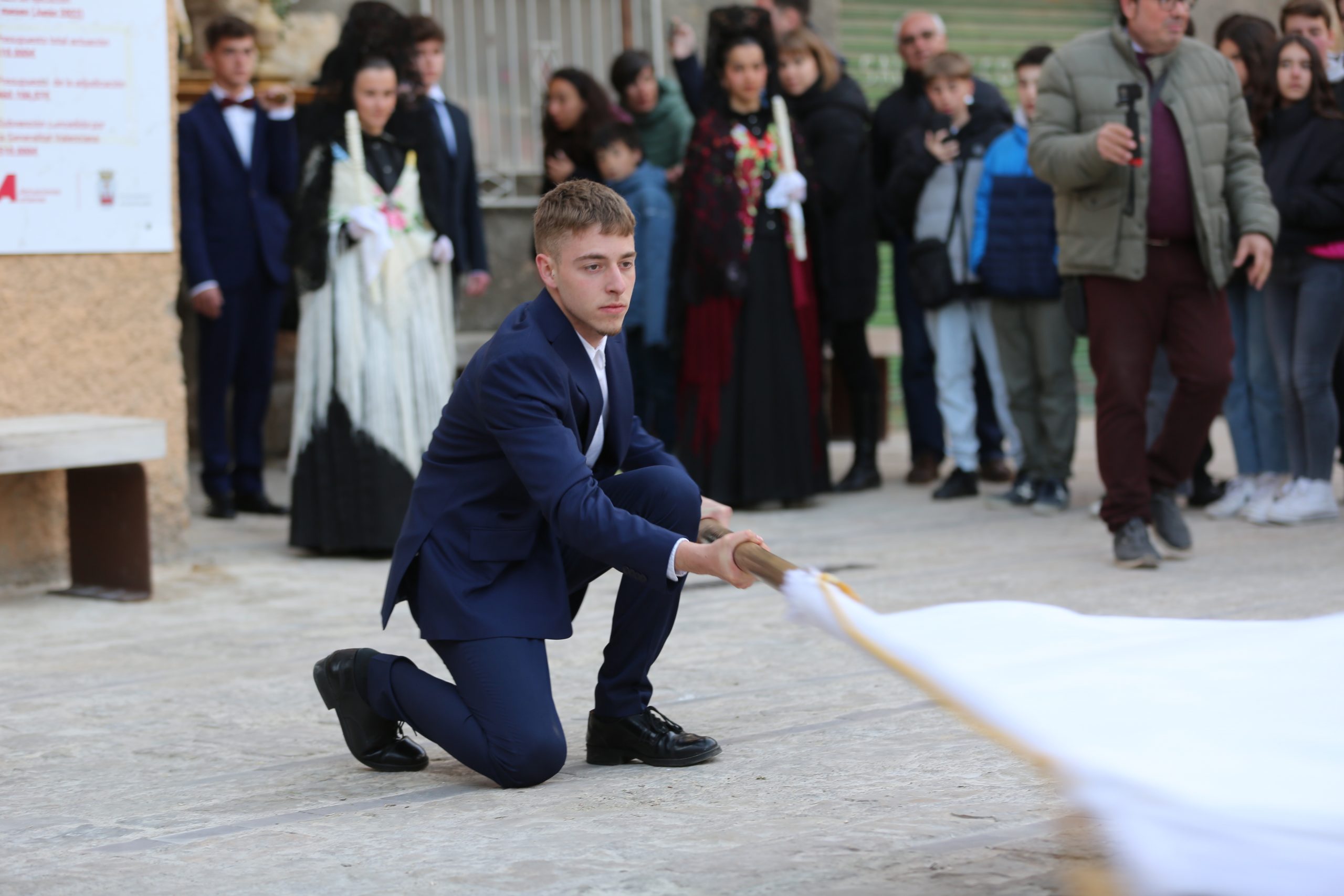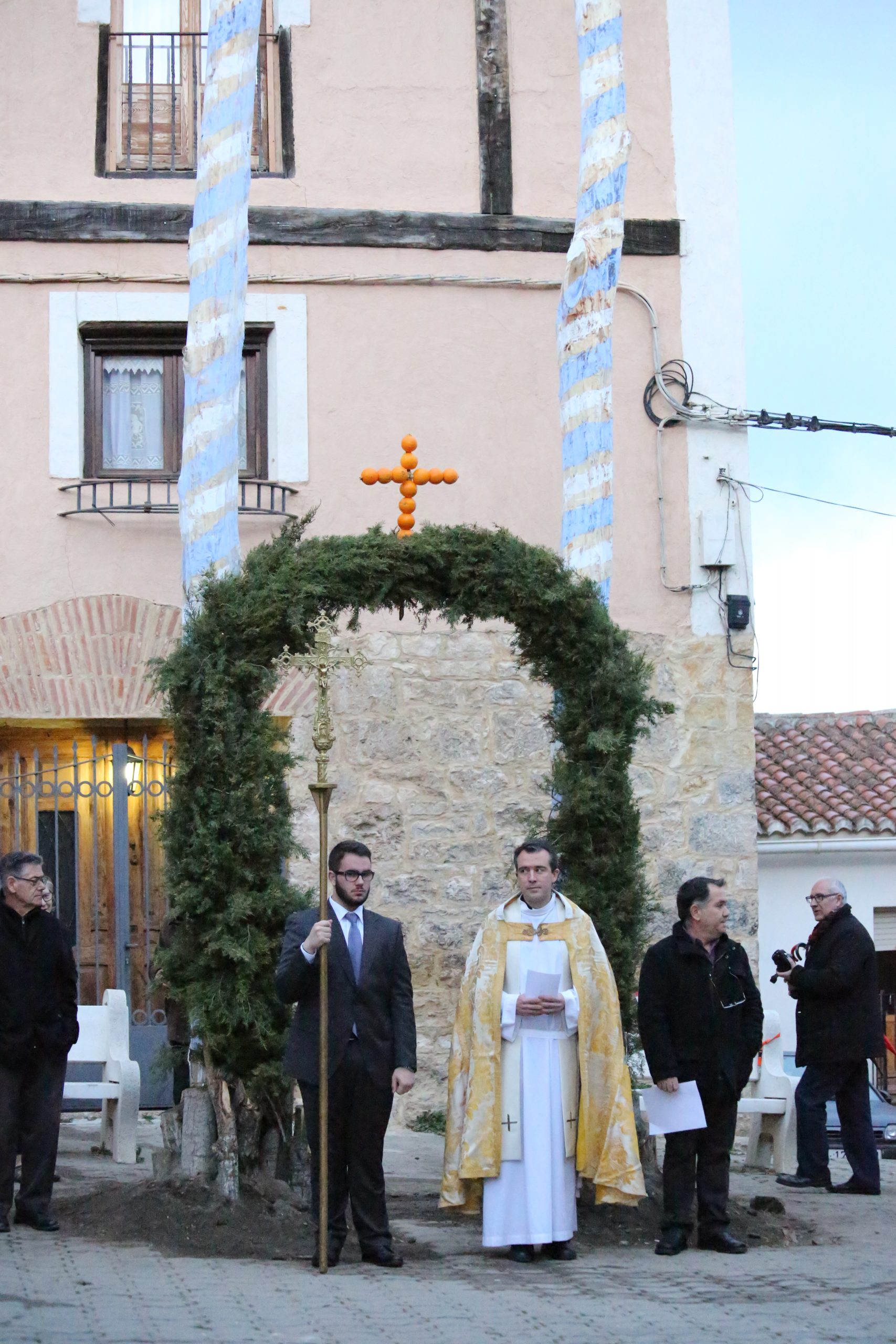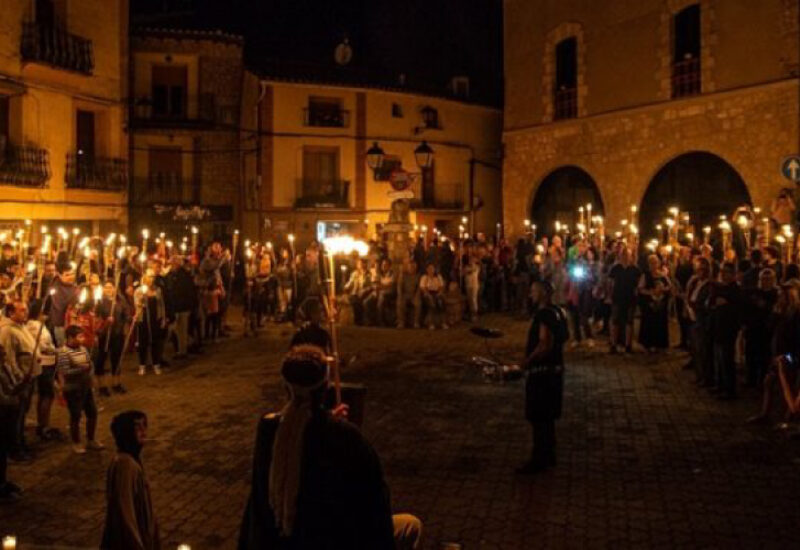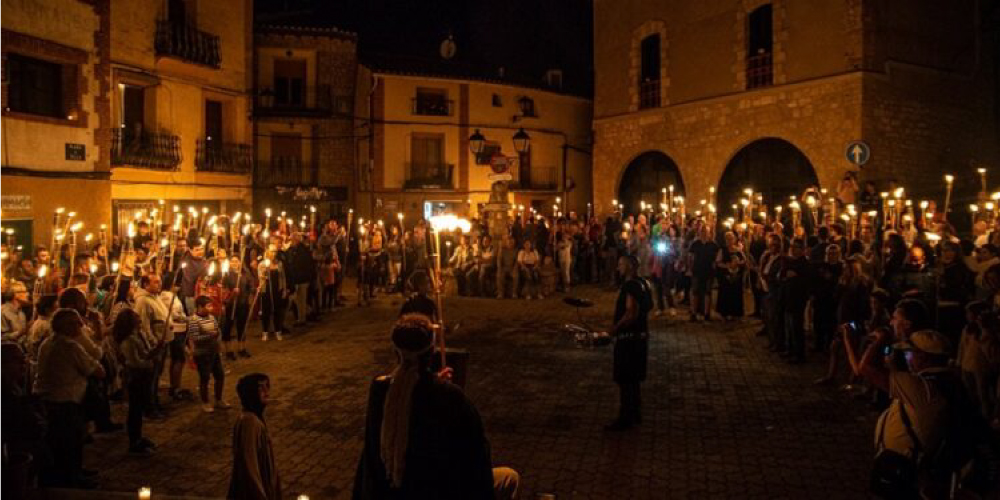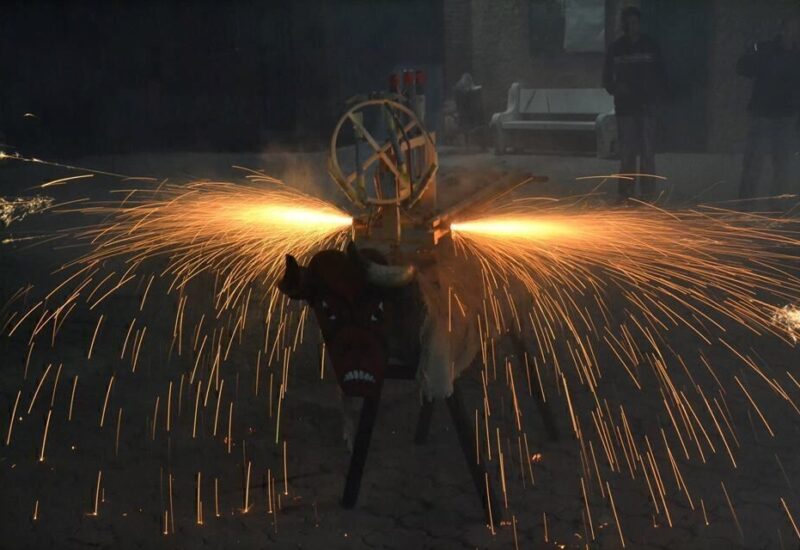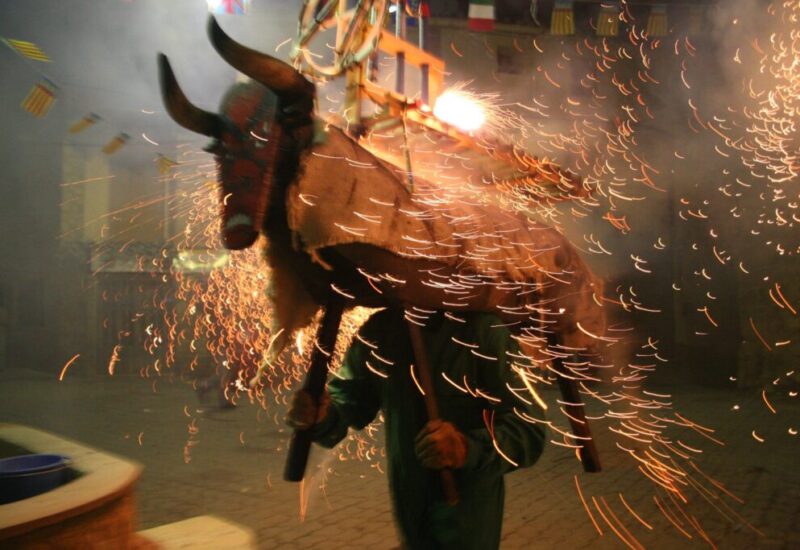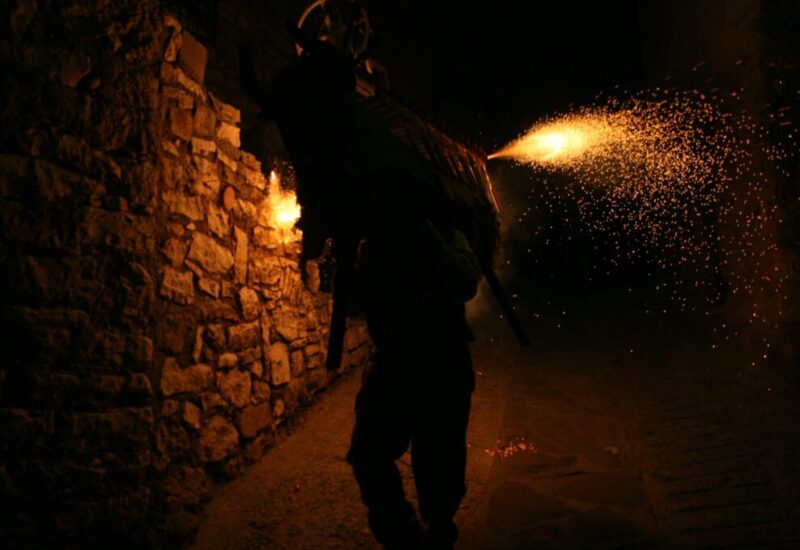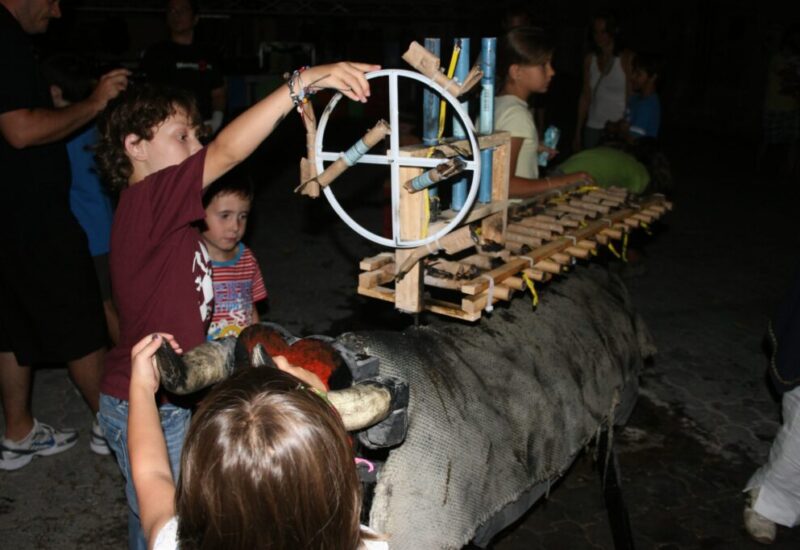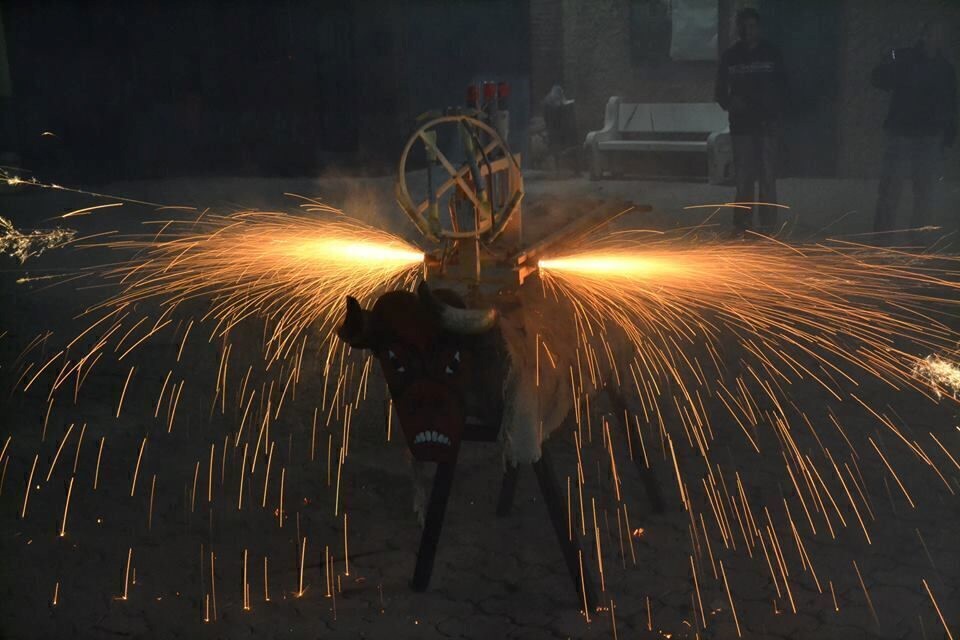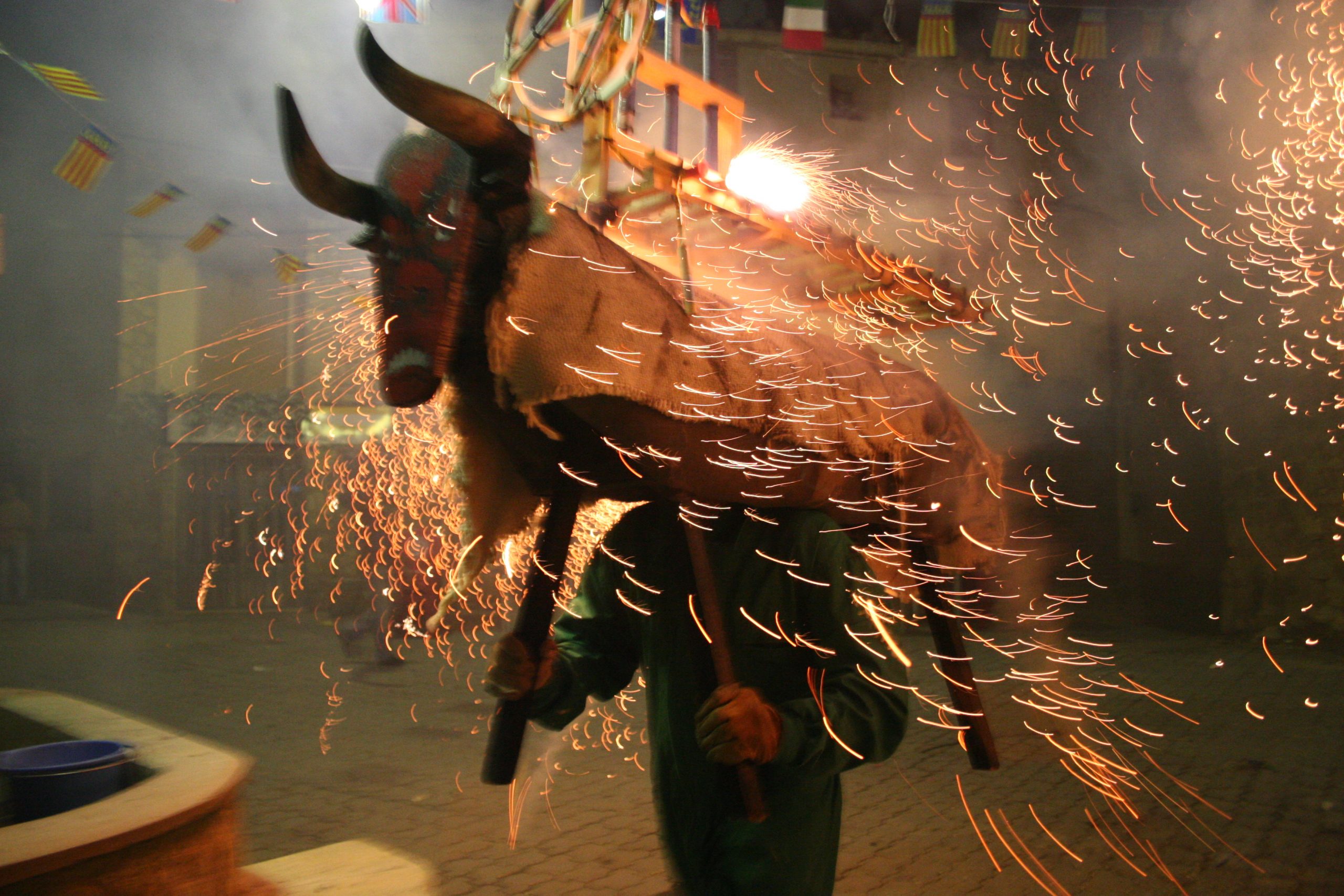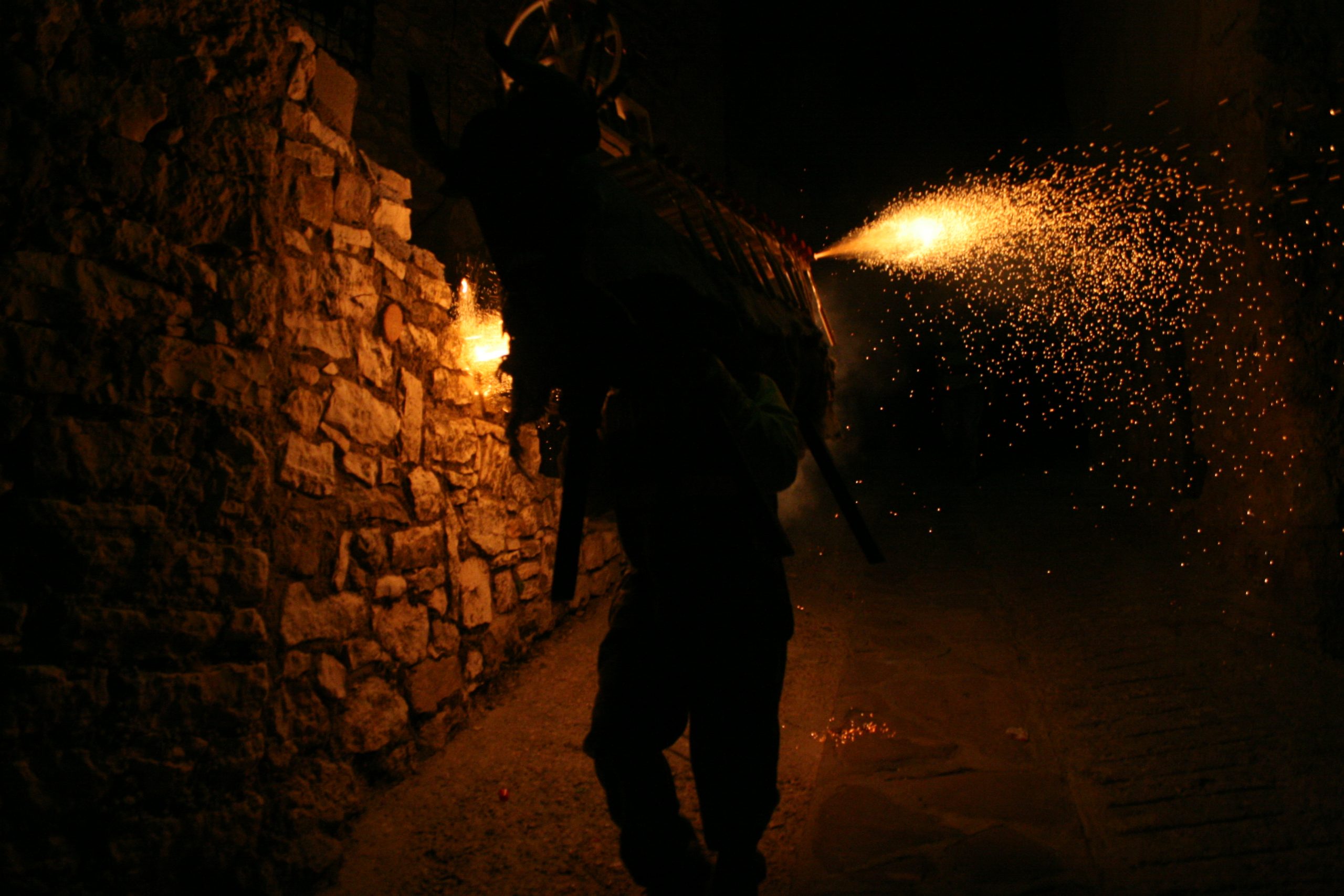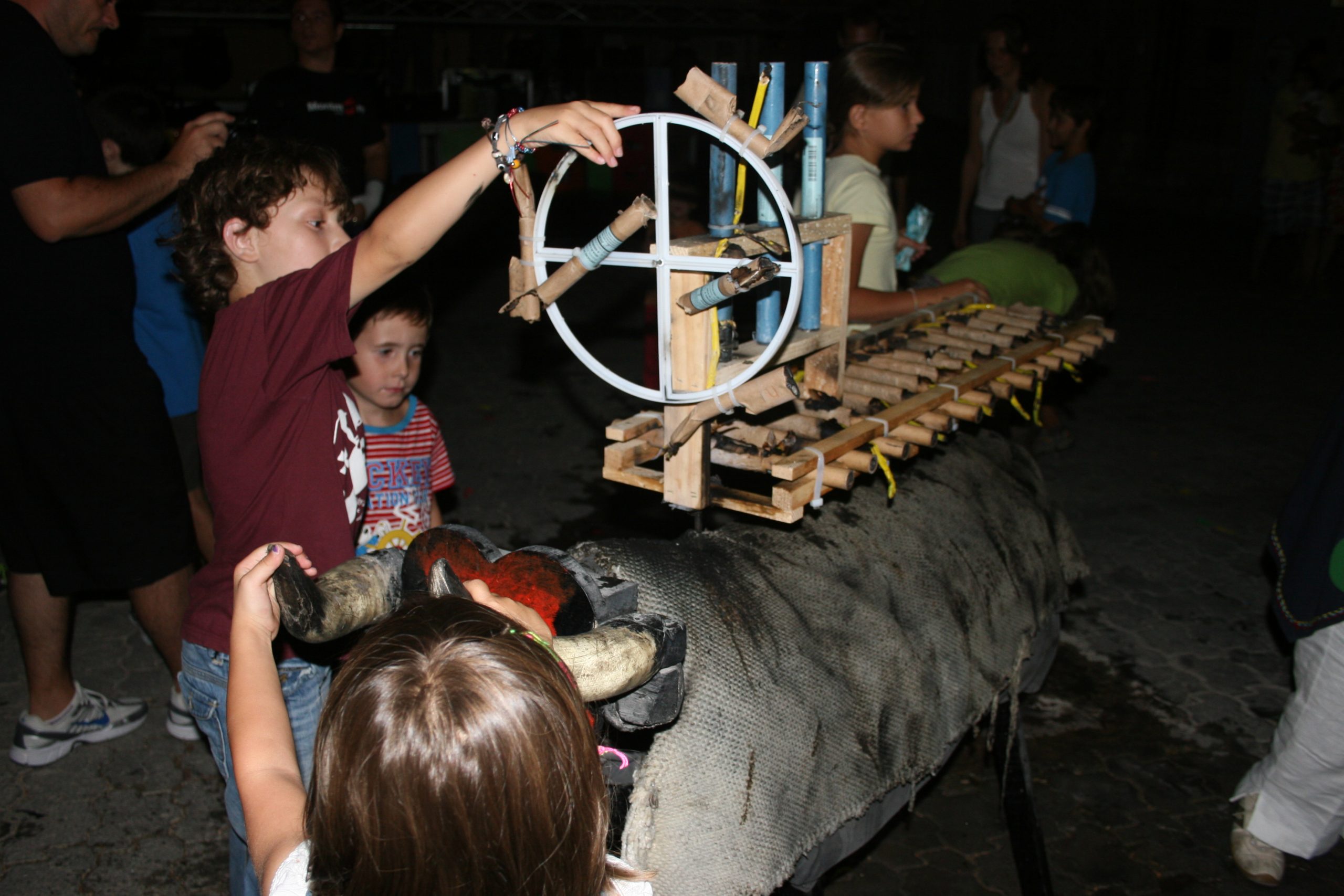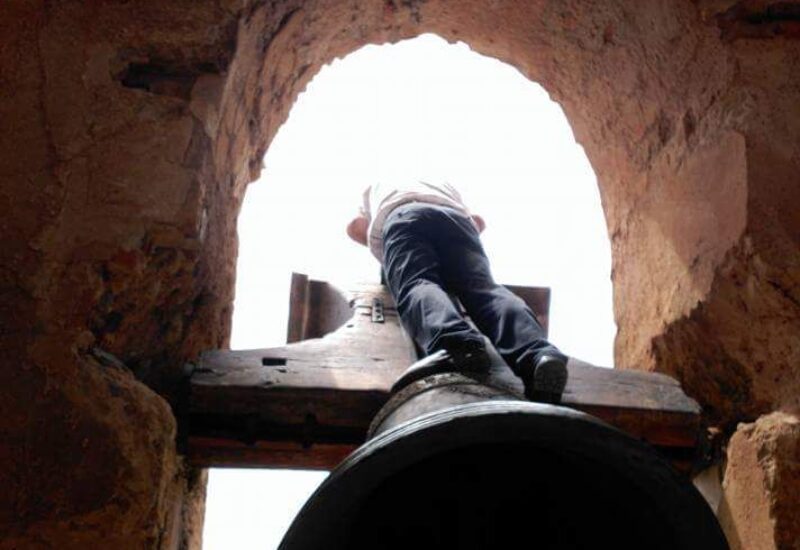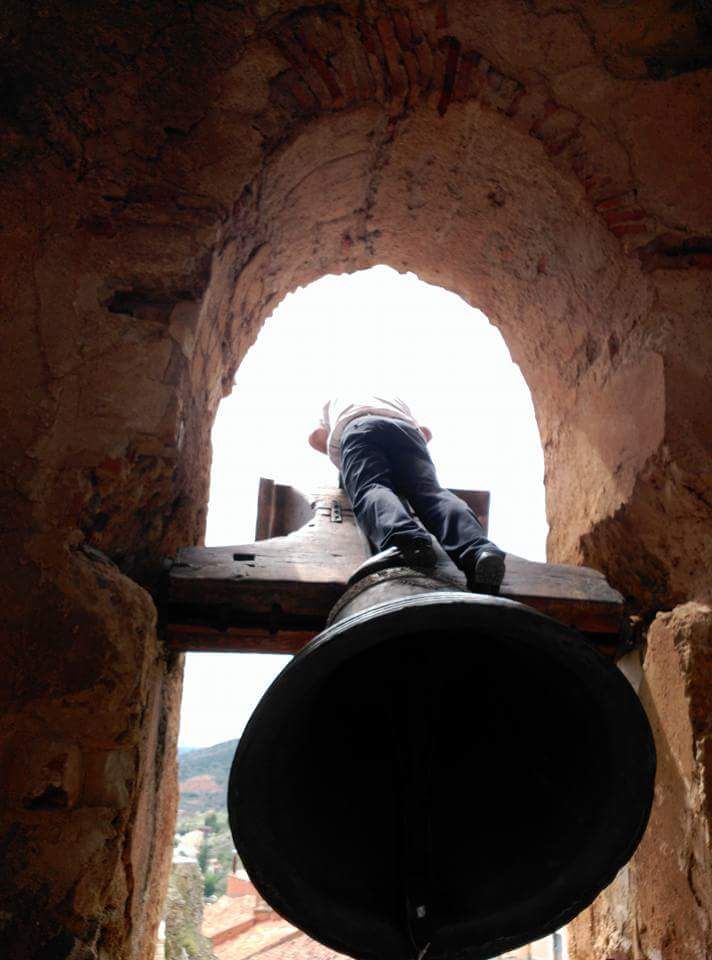If there is a traditional Easter Week with the flavour of "old times" in the Valencian counties of Turia, it is undoubtedly Easter Week in Castielfabib. It is a time when the municipality approaches the tradition and folklore of its ancestors, with unique and exceptional customs.
The uniqueness of this Easter is undoubtedly the mixture of pagan and religious acts in total harmony, despite the fact that its origin is not sufficiently documented.
Cutting the poplars, planting them in the Plaza, the singing of the Aurora, the making of the arches, the Easter Sunday courtesies, the Mayorales and Mayoralesas are fundamental aspects of the festival; but one of the signs of identity is the ringing of the bells and above all the human ringing that takes place on Sunday morning.
- Palm SundayPalm Sunday is the beginning of Holy Week. It is on this day that the names of the Mayorales and Mayoralesas, who will be the young people in charge of guiding all the activities over the next few days, are announced during mass.
- Maundy ThursdayThursday is the prelude to the central days of the festival, here begin the preparations by the Mayorales, Mayoralesas, family and neighbours so that everything is ready for the celebration of Easter castielera.
- Good FridayThis is the day when the poplars are cut on the banks of the Ebrón and carried to the Plaza de la Villa on the shoulders of the local young men and women, to be "planted" the following day. Once at their destination, they begin to peel the poplar trunks for the following day.
Once night falls, the Burial is celebrated, when the recumbent image of Jesus Christ and the Virgin of Sorrows are carried on the shoulders of the Mayorales, accompanied by the Mayoralesas.
Originally, the trees were two pine trees that the foremen, with the support of relatives and neighbours, cut down and dragged by horses from the mountain to the Plaza de la Villa.
This tradition is associated with a pre-Christian rite related to fertility where the spring was welcomed, in this case reconverted into another act of Holy Week.
- Holy SaturdayDuring the morning, the poplars are peeled, painted, if necessary, and the holes are made where they will later be planted. The last step is to place the tips of the trunk fields in a pine cup, also called "cocotas", emulating the origin of the tradition.
In the afternoon, the two poplars are "planted" with the help of the whole population, neighbours and visitors, with great tension and attention from everyone. It is at the end of the process that a young person climbs up to untie the ropes used to lift the poplar.
At the same time, three arches made of sargantillo and covered with juniper branches are made during the day. The largest is placed between the two poplar trees already planted, crowned with a cross of orange or juniper. The other two arches are placed at the doors of the Mayoralesas' houses.
At 00.00h at night, once Jesus Christ is resurrected according to tradition, the music that will enliven the evening begins.
It is said that in the past, these trunks were painted with lime in the shape of a spiral, alternating white with blue, green or red, and gifts were hung as a reward for those who climbed up to pick them up and untie the ropes as they passed. This tradition has recently been revived.
- Easter SundayAt 5 a.m., the "Canto de la Aurora" (dawn singing) begins in the houses of the Mayorales and Mayoralesas. The rondalla, made up of local residents and visitors to the town, is presented with cakes, sweets and liqueurs.
At 8 o'clock in the morning "El Encuentro" takes place, where the Virgin Mary meets her son Jesus Christ under the sargatillo arch and the poplars "planted" the day before in the Plaza de la Villa. The images are carried by the Mayorales accompanied by the Mayoralesas, and before the Virgin enters the Plaza, the Cortesías, or courtesies, bow to her with a script. The Virgin is accompanied by the "floreras" girls who throw flowers as she passes. At the end of the Encounter, the song "Oh what an Easter morning" is sung.
Accompanying the procession is the ringing of the bells, with the unique human ringing of the bells. In it, the young men of the village hold on to the yoke of the Guillermina bell of the Church of Nuestra Señora de los Ángeles to be rung alongside it.
After the mass, chocolate and cakes are offered to all those who wish to take part.
The Mayoralesas are dressed in the traditional costume consisting of a saya and black bodice, comb, black mantilla and a shawl. The Mayoraleses wear a costume, although they used to wear the traditional dress of the region, a part of the tradition that is in the process of being recovered.
